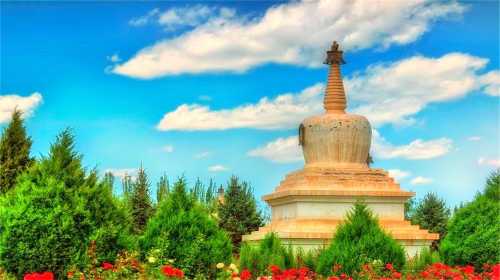App
Customer Support
Find Bookings
Popular Trip Moments
Leitai Han Dynasty Cultural Museum! | 6-Day Luxury Journey Through the Hexi Corridor: An In-Depth Exploration | This summer vacation, I'm only taking my kids to one place: Qinghai x Gansu | 8-Day In-Depth Tour of the Hexi Corridor | Desert Castle Adventure! 5-Year-Old Rides Camels to Explore Dunhuang's Divine Palace | Wuwei Shangsi Temple—My Altay | Binggou River: A Natural Wonderland in Gansu | Do you dare to step on the accelerator and go deep into the desert? | Help! This underrated city in Gansu is so beautiful, I want to settle down here! | Qinghai-Gansu Grand Loop Route Selection Guide, This Guide is Super Practical | Seize the last bit of the May Day holiday! Let's go to the niche city of Wuwei! | A dream come true: Sleeping on clouds at Hampton by Hilton Wuwei Liangzhou | May Day off-season travel destinations | Don't Know Where to Go for the May Day Holiday? Save This Amazing 2-Day Lanzhou Route | [Journey Through the Millennia-Old Silk Road | 3-Day Wuwei Travel Guide] — Gansu Wuwei | Qilian Mountains: A Hidden Paradise on Earth | Wuwei: A Great Place to Stay and Play, Xinglong is a Must-See! | Shenzhou Desert Wildlife Zoo - 神州荒漠野生动物园! | How to play in Lanzhou? You must go to this beautiful route | Gansu Baita Temple | Kumarajiva Temple | 7-Day Lanzhou Itinerary: Check All the Hot Spots | When you stand at the Wushaoling Mountain Pass, can you feel the vastness of the Han Dynasty? | Langham Oriental Hotel Wuwei: A Hidden Gem, Highly Recommended!!! | May Day Anti-Crowds Travel Guide: 5 Hidden Gems | Explore Tianzhu Tibetan Autonomous County and embark on a soul-stirring journey. | When you come to Wuwei, you must visit the Tianti Mountain Grottoes! It's so beautiful! | Wuwei/The wind on the mountaintop is the roar of warriors | Wuwei, the hometown of the Bronze Running Horse | I found a very pleasant homestay in Wuwei
Recommended Attractions at Popular Destinations
Popular Attractions in Bangkok | Popular Attractions in Manila | Popular Attractions in Tokyo | Popular Attractions in Taipei | Popular Attractions in Hong Kong | Popular Attractions in Seoul | Popular Attractions in Kuala Lumpur | Popular Attractions in Los Angeles | Popular Attractions in Shanghai | Popular Attractions in New York | Popular Attractions in Shenzhen | Popular Attractions in Osaka | Popular Attractions in Singapore | Popular Attractions in London | Popular Attractions in Guangzhou | Popular Attractions in San Francisco | Popular Attractions in Beijing | Popular Attractions in Macau | Popular Attractions in Bali | Popular Attractions in Jakarta | Popular Attractions in Paris | Popular Attractions in Ho Chi Minh City | Popular Attractions in Istanbul | Popular Attractions in Phuket | Popular Attractions in Chicago | Popular Attractions in Seattle | Popular Attractions in Toronto | Popular Attractions in Orlando | Popular Attractions in Cebu | Popular Attractions in Chiang Mai
Popular Restaurants in Wuwei
周记三套车·甘肃名小吃 | 老王家菜锅子(西关店) | BAO LIN NIU ROU CHAO MIAN PIAN BEI GUAN DIAN | 汉明海鲜自助火锅(北关店) | 武威金穗大酒店·百姓厨房(黄羊店) | 老王三套车 | 食为天家味鲜(南关店) | 兄弟烤坊(九中店) | 必胜客(天丰店) | YI NING ZHAI JING PIN SHUAN | Dingruixuanjingpinshuan | 签上百味串串吧 | 牛少爷牛肉炒面片(凉州旗舰店) | 晋茶火锅店 | 马路边边(古浪街店) | 新疆大胡子烤肉城共和街总店 | 不一样砂锅面(明清街店) | 年三十饺子楼(海藏路店) | 老回民·精品自助火锅烧烤 | Yiningzhaimingdian | 德克士(步行街店) | 祥和饭庄(杨府街店) | Chongqing Chicken Hot Pot | Heisankaoroucheng | 云翔国际酒店·餐厅 | 汉明酒楼 | 武威金玺国际酒店(市医院星光购物广场店)·自助早餐厅 | He Jixing Mian • Three sets of cars | Zhaojiadayuan | 海底捞火锅(武威星光店)
Popular Ranked Lists
Popular Best Things to Do in Xing'an County | Top 10 Best Things to Do in Yongzhou | Popular Luxury Hotels Near Smaliavichy District | Top 50 Must-Visit Restaurants in Bali | Top 50 Must-Visit Restaurants in Kyoto | Popular Best Things to Do in Loudi | Top 20 Luxury Hotels near Palghar | Top 50 Must-Visit Restaurants in Songyang | Popular Best Things to Do in Jinchang | Top 10 Luxury Hotels near Sam Son | Popular Best Things to Do in Ankang | Popular Best Things to Do in Meizhou | Popular Best Things to Do in Kaiping | Popular Luxury Hotels in Ramatuelle | Popular Luxury Hotels in Erdene | Top 50 Must-Visit Restaurants in Frankfurt | Popular Best Things to Do in Guang'an | Top 50 Must-Visit Restaurants in Ho Chi Minh City | Top 50 Must-Visit Restaurants in Vienna | Top 10 Premium Hotels near Ajibata | Top 10 Must-Visit Restaurants in Bad Ischl | Top 50 Must-Visit Restaurants in Auckland | Popular Premium Hotels Near Lancaster County | Top 50 Must-Visit Restaurants in Dalat | Popular Best Things to Do in Luanping | Popular Best Things to Do in Zhoukou | Top 50 Must-Visit Restaurants in Santorini | Popular Luxury Hotels Near Pirmam | Top 50 Must-Visit Restaurants in Dubai | Popular Best Things to Do in Jingmen
About
Payment Methods
Our Partners
Copyright © 2025 Trip.com Travel Singapore Pte. Ltd. All rights reserved
Site Operator: Trip.com Travel Singapore Pte. Ltd.
Site Operator: Trip.com Travel Singapore Pte. Ltd.











